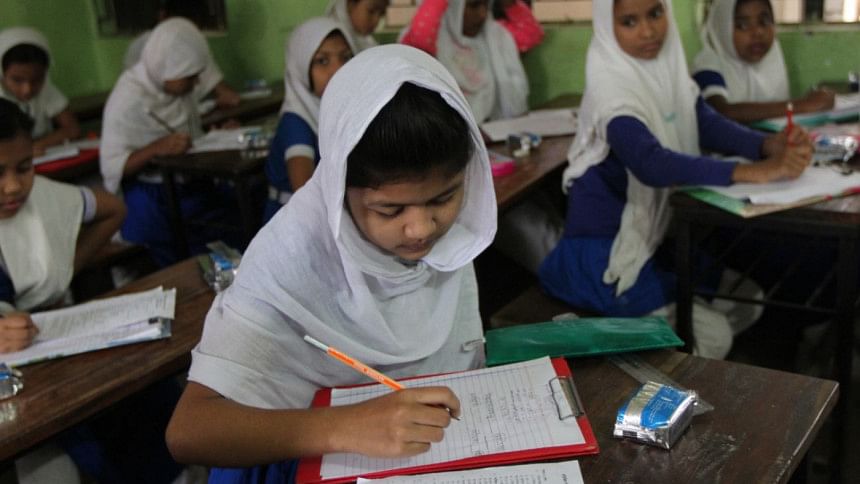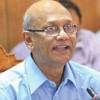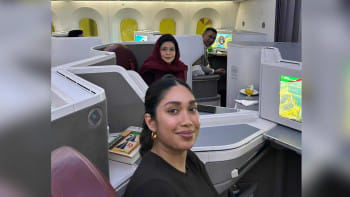Five steps to make it happen

On May 19, The Daily Star headline announced, "From now on, primary education in the country will be up to class-VIII". The decision had been taken and made public by the Minister of Education, Nurul Islam Nahid.
Talking to The Daily Star, Education Minister Nahid said that extending the level of primary education was the biggest decision in the history of education of the country. This is the spin given to the decision which was actually to shift the responsibility for grades 6 to 8 to the Ministry of Primary and Mass Education (MoPME) from the Ministry of Education (MOE).
That primary education should be extended to grade 8 was in the Education Policy approved by the Parliament in 2010. Accordingly, in 2013, MoPME opened class 6 in some 600 primary schools and the plan was to add more classes in more schools every year.
Several problems quickly surfaced with the MoPME initiative. Although the new grade six was opened selectively, the initiative stumbled due to difficulties in respect of additional classrooms and teachers. Parents were more interested to send children to a secondary school where there would be designated teachers for the various subjects and students would be able to continue in the same school beyond grade 8.
There is a basic difference in the curriculum and pedagogy for the lower primary grades and for grade six and above. Building the foundation of literacy and numeracy is the main task in the lower grades, whereas teaching is more subject-based which requires specifically trained and qualified teachers for the subjects in the higher grades.
Moreover, in our current system, education up to grade 5 is supposed to be free of tuition charges and teachers and schools are largely under the government. For grade 6 and beyond, the teachers and schools are mostly non-governmental with students paying admission and tuition fees. Would the recent decision change all this and will all the teachers and schools teaching grade 6 to 8 come fully under government management?
Arguably, the reluctance of the education establishment and the policy-makers to face these challenges held them back from seriously pursuing the goal of grade 8 universal education. The Primary Education Development Programme 2011-16 (known as PEDP3), supported by some 10 major donor agencies, failed to include this component within the programme. Only a half-hearted initiative was begun in 2013, as noted. This lack became an embarrassing lapse in the basic education provisions of the country that could not be ignored any longer.
Eventually, at least 12 years of public education should be free and compulsory as stipulated in the new SDG 2030 and Education 2030 agenda (replacing MDG and EFA 2015). As an aspiring middle-income country, we cannot but work towards that goal seriously and urgently. However, it is not just a matter of finding the funds. And not just a matter of passing the administrative task to another Ministry.
The division of the territory between two Ministries, unlike anywhere else in the world for school education, seems to have prevented us from looking at what provisions we already have and from taking coordinated action. Some 19,000 high schools at present teach grades 6-8 as part of the secondary programme. About 2,400 of these, known as junior secondary schools, offer only grades 6-8.
These schools at present serve over 60 percent of the eligible secondary level students, i.e., those who complete primary education. In fact, more than 80 percent of the primary school completers move on to grade 6, but many drop out soon, because of poor services in school and poverty-related family circumstances of the children. The need obviously is to improve the services and add more facilities and teaching personnel to existing secondary schools, rather than open new schools or new classes in primary schools.
Looking at it mostly as a problem of shifting the administrative task to MoPME by labelling it as primary education is not particularly important and makes the job unnecessarily difficult. It is more important to ensure that grades 6-8 education of acceptable quality is available to children wherever they are than to pass the buck to MoPME.
An added complication is that the ill-advised introduction of high-stake grade 5 public examination in 2010 has caused great damage to quality of teaching and learning in primary school. It intensified dependence on guidebooks, rote memorisation, and private coaching; and encouraged students and teachers to engage in unethical practices.
Prof. Muhammad Zafar Iqbal has written to the Minister of Education, saying that the primary terminal exam brought a disaster to the education system, with private coaching taking a worse turn. These negative effects have already spread to grade 8 like a virus. There is no strong educational justification for a high-stake public examination even at the end of grade 8.
Quality education for all children up to grade 8 can be achieved rapidly if it is treated as an education problem and not an administrative jurisdiction issue. Five pragmatic steps with high level policy backing will help achieve this goal.
1. Begin with the premise that a substantial amount of facilities and personnel exists now to serve the large majority of eligible students for grades 6-8; look into these, and concentrate on improving their services, instead of setting up new facilities.
2. Undertake an upazila-wise rapid assessment of the state of provision of physical facilities and teachers for grades 6-8, make a projection of potential students for the next five years, and identify gaps and deficits. Primary and secondary education officers at upazila and district levels should work on this jointly. Keep local thugs and the MPs out of it.
3. Class 5 public examinations should be abolished, and emphasis placed on school-based assessment (with an annual and a half-yearly exam) plus formative assessment as part of good pedagogic practice. A public exam after grade 8, if retained, should be to test basic competencies, rather than to test knowledge on all subjects and textbooks. Assessment of learning in basic competencies at different stages - such as at grades 3, 5, and 8 - should be conducted , as in many countries, along the line of national student assessment now carried out every other year by DPE to assess the performance of the system, not to label individual students.
4. Additional resources must be found for improving quality of the existing grades 6-8, wherever they are, including more and better qualified and trained teachers, libraries and laboratories, playground, toilets and classrooms. This improvement, based on planning under step 2, should be guided by joint taskforces at the national and upazila levels of MoPME and MOE, until the policy-makers see the logic of placing all school education under one Ministry.
5. Work on an integrated curriculum development from pre-primary to grade 8 and eventually grade 12 should be undertaken by examining curriculum load, articulation, balance and sequence and effective implementation of curriculum in schools.
The last two steps reiterate the need and justification for coordinated development of pre-tertiary education guided by a single Ministry at the national level. Sooner this is done the better.
The writer is professor emeritus at BRAC University.

 For all latest news, follow The Daily Star's Google News channel.
For all latest news, follow The Daily Star's Google News channel. 








Comments